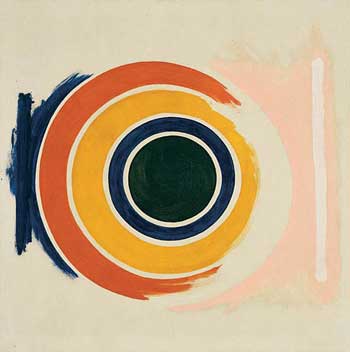
|
||
|
Portland art blog + news + exhibition reviews + galleries + contemporary northwest art
|
||
Kenneth Noland 1924-2010 
Kenneth Noland's No 1, 1958 (Clement Greenberg Collection Portland Art Museum) "A major artist has died. Kenneth Noland was a central figure in the Color Field movement and an artist who inherited the mantle of Josef Albers as America's reigning colorist. A Greenbergian formalist who made color a physical thing as well as a fleeting optical experience. The Museum is fortunate to have his first Target painting on view and some twenty-five works in its permanent collection." -Bruce Guenther, Chief Curator Portland Art Museum Also, Roberta Smith writes about the passing of Kenneth Noland at age 85. Portland has a particular connection to the preeminent color field painter because many of his most important works form the backbone of the Clement Greenberg Collection, given to the Portland Art Museum in 2001. It was a deal put together by then art dealer Tracy Savage and it forced the museum to think about building a contemporary wing. In particular, PAM's holdings include Noland first target painting "#1,1958" and my personal favorite "Air Beauty."  Noland's Air Beauty (Greenberg Collection, Portland Art Museum) Recently on Facebook Jerry Saltz asked the question, "Why Stripes?" and one response asked if anyone did horizontal stripes? Noland absolutely did and in many ways it was his intensely sensitive use of basic elements like color, proportion and scale. If pleasure is the absence of pain Noland's best paintings like "Air Beauty" fully realize that goal. It is no secret that life is complicated and full of pragmatic existential choices, so to turn one's back on that daily grind to create formally concerned, stripe, chevron and target paintings does have value. They have value precisely because our humanity isn't just found in our struggle,
it can also be found in moments of grace like Noland's best works. Sure there
was struggle in creating these works but thankfully Noland's art is all about
never letting us see him sweat... he's the anti Pollock and an anti Warhol. Sometimes the way we turn away from the tragic defines us more than how we dwell on the unpleasant and Noland's is a very American kind of resiliency. Perhaps we can call Noland's art an antidote to tragedy. Check out this little
tour of his home to see what I mean. Posted by Jeff Jahn on January 05, 2010 at 13:33 | Comments (0) Comments Post a comment Thanks for signing in, . Now you can comment. (sign out)
(If you haven't left a comment here before, you may need to be approved by
the site owner before your comment will appear. Until then, it won't appear
on the entry. Thanks for waiting.)
|
| s p o n s o r s |
 |
 |
 |
 |
 |
 |
 |
 |
 |
 |
 |
 |
 |
 |
 |
 |

|
Site Design: Jennifer Armbrust | • | Site Development: Philippe Blanc & Katherine Bovee | |

